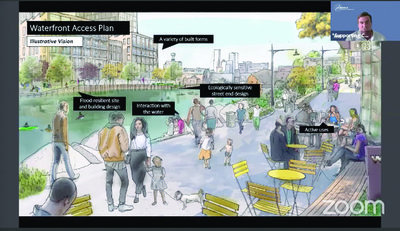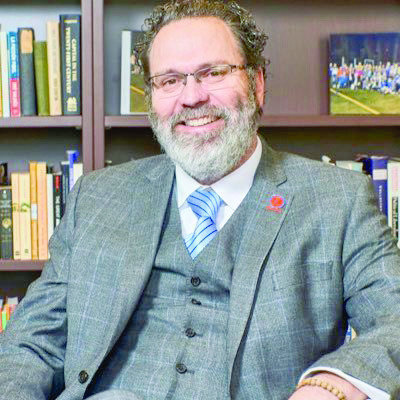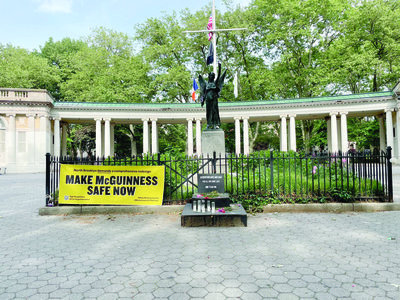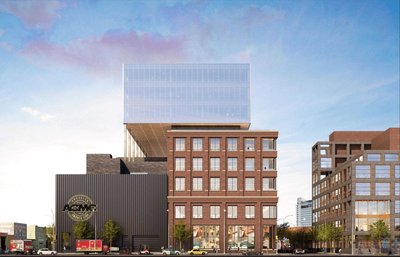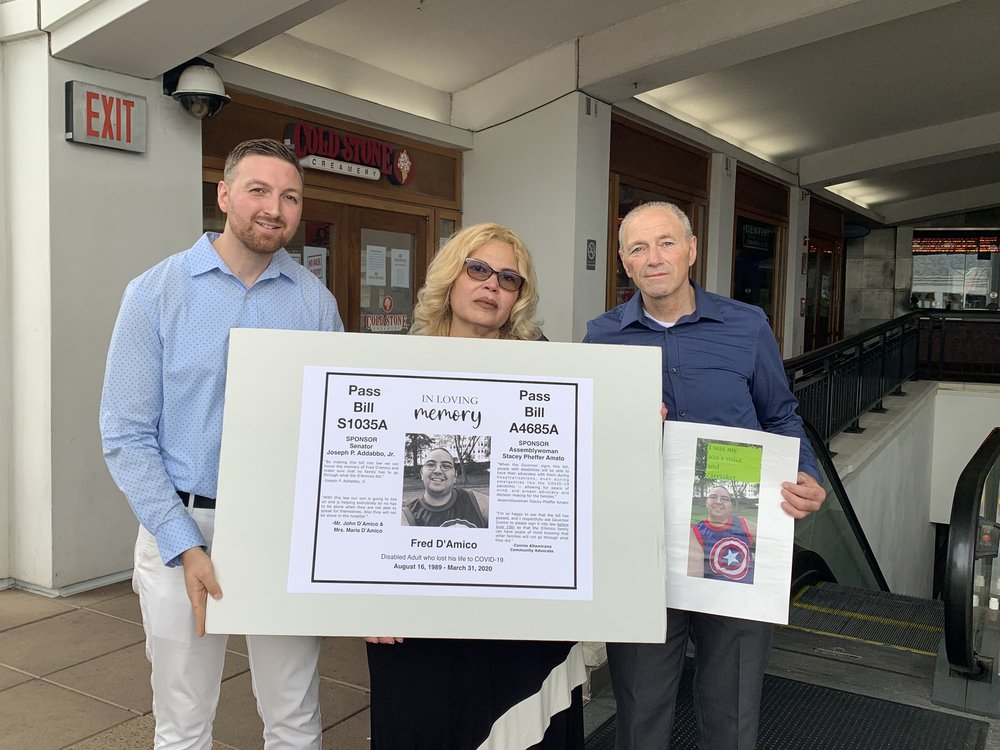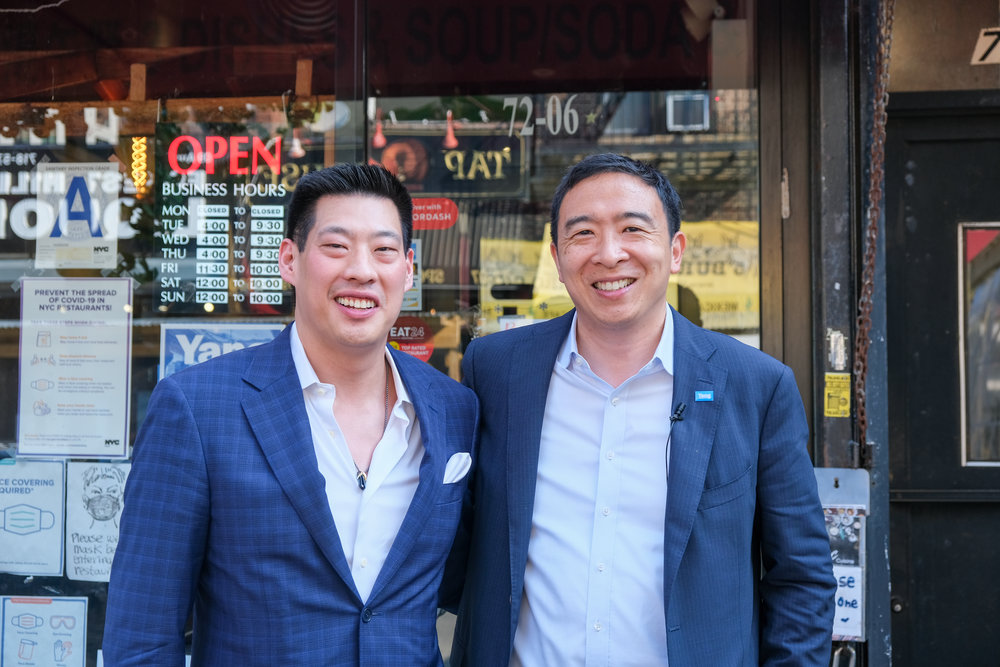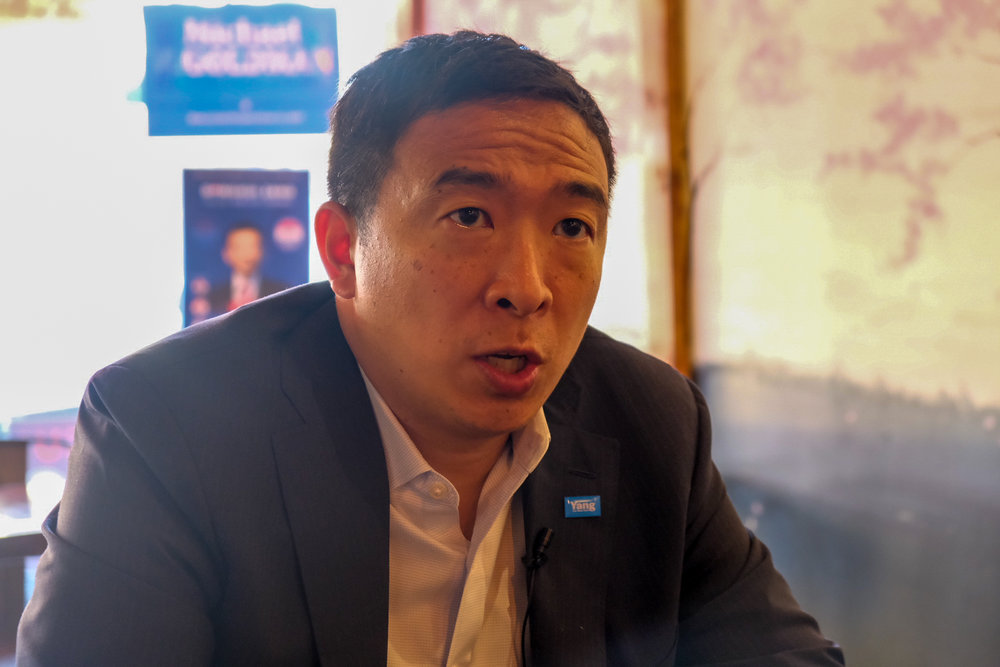Public Hearing talks pros and cons of Gowanus Rezoning
Brooklyn Community Boards 2 and 6 last week hosted a joint public hearing to discuss the Gowanus rezoning.
The hearing allowed community members to share verbal testimony at either an in-person site in Park Slope or virtually over Zoom. It was the first time that a city land use hearing was conducted using a hybrid format.
“This is an extremely consequential proposal for our neighborhood,” said CB6 Land Use Committeee chair Alec Schierenbeck at the start of Thursday’s meeting. “However, there are many issues regarding the safety and infrastructure of the project.”
Jonathan Keller represented the Department of City Planning and presented a slideshow outlining the proposal.
“We are here after decades of community discussion and nonaction about the Gowanus neighborhood,” said Keller. “During that time the world has changed drastically. The rezoning would celebrate the unique history and features of the Gowanus Canal while preparing it for the future.”
According to Keller’s presentation, the Gowanus rezoning would bring approximately 8,500 new housing units to the neighborhood, including 3,000 units that would be permanently affordable.
The project would also create a 1.5-acre park, new school, and new open spaces along the canal. Keller added the project would contribute to cleanup efforts along the highly polluted waterway.
Before the testimony section of the hearing began, Councilman Brad Lander encouraged attendees to respect those with differing opinions.
“People are often skeptical of rezonings, and for good reason,” said Lander. “I have often been against them myself. However, we are also called to find responsible and democratic ways to create a more integrated and sustainable city.
“I believe that the Gowanus rezoning could be a good rezoning,” he added. “It is not there yet, but it could be. I think it has the potential to bring racial equity and affordable housing to the neighborhood without much displacement.”
Lander delivered his remarks virtually, but later arrived at J.J. Bryne to speak with constituents.
The testimonies delivered varied greatly, ranging from avid support of the rezoning to stark opposition.
“I am in favor because we need affordable housing,” said Joel Hogan, a 4th Avenue resident. “Gowanus was last rezoned in the 60s, which means 80 years of factories leaving and gentrification in the neighborhood.”
Many supporters were similarly focused on the benefits of affordable housing, including City Council candidate Matthew Morgan.
“We are a city, not a suburb or a rural town,” Morgan said. “That means creating housing in every neighborhood, in every place, for everyone. We cannot hold more housing hostage.”
Critics of the rezoning focused their testimonies on environmental factors and the shortcomings of the affordable housing provisions.
“I need proof that the Gowanus cleanup would be concluded before anyone moved in and that the infrastructure could handle it,” said Brigit Rein, also a City Council candidate. “I could not even find a time table for the cleanup work.”
Debbie Stoller, a lifelong NYCHA resident in Gowanus, took aim at the rezoning’s lack of support for the NYCHA housing that already exists in the neighborhood.
“We will end up with a neighborhood that will be one of the tallest and densest in the borough,” said Stoller. “If 70 percent of the housing is market rate, we will be creating a white wealthy neighborhood. This rezoning benefits developers and developers only.”
“We will not support this rezoning until NYCHA residents are included,” added NYCHA resident Karen Blondel.
The Landmarks and Land Use Committees of both boards will vote on the rezoning proposal by the end of the month.
The hearing comes on the heels of a months-long controversy surrounding the rezoning of a large majority of Gowanus. The proposal was originally conceived by the Bloomberg administration, but found new life under Mayor Bill de Blasio.
It would rezone 80 blocks of the neighborhood to make way for new developments, including the controversial plan to build on the highly polluted “Public Place” site along the Gowanus Canal.
Community groups including Voice of Gowanus have constantly fought against the rezoning. Their criticism is directed at both the legal process to approve the rezoning and the environmental risks that could come along with new development.




